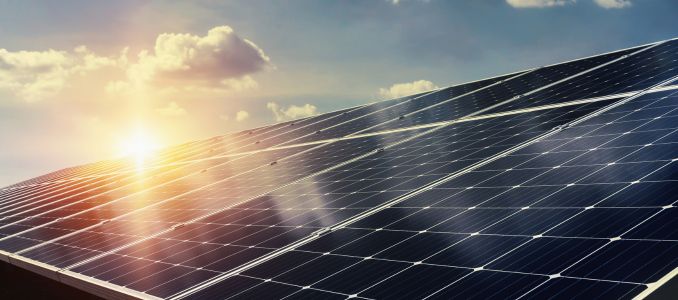
Community Solar Is Powering a More Equitable Clean Energy Future Across the U.S.
Shared solar programs are expanding access to renewable energy for renters, businesses, and underserved communities.
- By Ellie Gabel
- May 19, 2025
Community solar is a powerful movement that is quietly reshaping the renewable power landscape in the United States. Across the country, local projects are giving businesses and households an opportunity to tap into solar energy, even if they cannot install panels on their rooftops themselves.
The shift toward community solar is not just about advancing technology or cost savings — it is about building stronger communities by broadening access and accelerating the transition to clean energy.
What Is Community Solar?
Community solar refers to local solar power installations shared by multiple subscribers who receive electricity bill credits for their share of the power produced. In most cases, subscribers save on their electricity expenses, depending on the program design and prevailing rates.
The model is especially beneficial for renters and those with shaded roofs because it eliminates the need to install solar panels individually. Community solar stands out as a scalable and flexible renewable energy model because it circumvents traditional solar power adoption by addressing high energy costs and overcoming limitations due to space and home ownership.
Benefits of Community Solar Adoption
Beyond lowering utility bills, community solar plays a major role in cutting greenhouse gas emissions, decarbonizing the grid, and reducing fossil fuel reliance. It also helps create a variety of local jobs, keeping more energy dollars circulating within the community. Because some programs prioritize low-income households, clean energy also becomes more accessible and equitable.
Sustainability and longevity are also key reasons why this program is advantageous. Rigid solar panels — commonly used in high-output solar farms because of their durability and heat resistance — maintain high efficiency even in extreme or fluctuating heat conditions.
Local Initiatives Leading the Way
Community solar adoption is already happening in towns, neighborhoods and cities across the U.S., powered by partnerships between developers, utilities, corporations and local governments. There is at least one community solar project in 44 areas in the country. Notable collaborations include: Microsoft and Nexamp
In May 2025, clean energy firm Nexamp announced that it signed a deal with Microsoft to support around 100 new community solar projects — totaling 300 megawatts — across five independent system operator regions in the U.S. The project prioritizes areas that have not experienced the environmental and economic benefits of solar energy yet. It is set to roll out in the next four years, aligning with Microsoft's goal to become carbon-negative by 2030.
Shared Solar Program in Virginia
Virginia passed laws in 2020 to create the Shared Solar Program, which provides Dominion Energy Virginia customers the chance to subscribe and get credits on their monthly electricity bill. The initiative prioritizes renters, building occupants, those with shaded or poor roofing conditions, and homeowners who cannot buy their own solar panels. Customers pay a minimum amount to the utility provider to cover distribution and infrastructure maintenance work.
As evidence of the push toward clean energy use, the Community Solar Consumer Choice Act of 2023 aims to broaden access to solar programs by instructing the Department of Energy to support initiatives for its growth. The bill also seeks to extend the length of contracts between public utilities and the federal government, thus encouraging investment and greater stability.
Cost of Community Solar Programs
The benefits of community solar are clear, but it is equally important to understand the financial considerations.
On the upside, most solar programs have no upfront costs, eliminating one of the largest roadblocks to adoption. Subscribers can sign up and start receiving credits on their electric bills. This model helps underserved households get on board with the transition to clean energy.
On the downside, actual cost savings are unpredictable. When contract terms are unclear or market conditions shift, some customers may even receive higher rates compared to their standard utility expenses. Regulatory hurdles can also slow down project rollouts and increase administrative and operating costs, which may be passed on to consumers later.
Building a Clean Future Through Community Solar
The need for resilient energy resources increases as climate change intensifies. Community solar programs have the ability to distribute power across many sites, making it accessible to more people across different economic backgrounds. From small towns in Maine to corporate locations in the Midwest, the community solar movement is laying the foundation for a cleaner, more sustainable, and more equitable energy future.
About the Author
Ellie is a freelance writer as well as an associate editor for Revolutionized.com. She's passionate about covering the latest technological innovations and how they're shaping the future of our world.